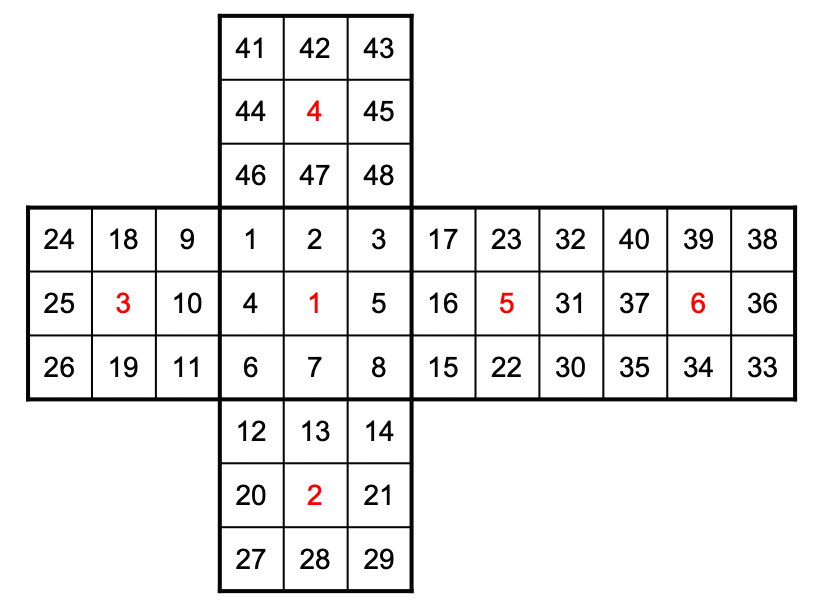PermutationGroup[{perm1,…,permn}]
represents the group generated by multiplication of the permutations perm1,…,permn.


PermutationGroup
PermutationGroup[{perm1,…,permn}]
represents the group generated by multiplication of the permutations perm1,…,permn.
Details
- The generating permutations permi must be given in disjoint cyclic form, with head Cycles.
- Properties of a permutation group are typically computed by constructing a strong generating set representation of the group using the Schreier–Sims algorithm.
Examples
open all close allScope (3)
Applications (2)
This is the group of all rotations and reflections of a regular ![]() -sided polygon, the dihedral
-sided polygon, the dihedral ![]() group, for
group, for ![]() . It can be generated by a rotation of an angle
. It can be generated by a rotation of an angle ![]() and a reflection along an axis through a vertex:
and a reflection along an axis through a vertex:
Construct the octagon corresponding to each group element:
This is the original polygon and its seven rotations. Numbers increase counterclockwise:
This is the polygon reflected along the bisection 1–5 and its seven rotations. Numbers increase clockwise:
The group of automorphisms of a graph is represented using PermutationGroup:
Properties & Relations (3)
Neat Examples (1)
The moves of a Rubik's cube form a group. Number the moving facelets from 1 to 48:

These are the six basic rotations:
Swapping two neighbor edge facelets is not allowed:
Simultaneous swaps of two edge pairs is allowed:
This is the superflip move, which switches all edge pairs simultaneously without changing any corner:
Edges and corners cannot be mixed (as the action of the group on the cube is not transitive), but any two corners or any two edges can be swapped:
See Also
Cycles GroupOrder GroupElements GroupElementQ GroupStabilizerChain GraphAutomorphismGroup
Function Repository: SubsetGroup StauduharGaloisGroup FindGroupIsomorphism
Tech Notes
Related Guides
History
Text
Wolfram Research (2010), PermutationGroup, Wolfram Language function, https://reference.wolfram.com/language/ref/PermutationGroup.html.
CMS
Wolfram Language. 2010. "PermutationGroup." Wolfram Language & System Documentation Center. Wolfram Research. https://reference.wolfram.com/language/ref/PermutationGroup.html.
APA
Wolfram Language. (2010). PermutationGroup. Wolfram Language & System Documentation Center. Retrieved from https://reference.wolfram.com/language/ref/PermutationGroup.html
BibTeX
@misc{reference.wolfram_2025_permutationgroup, author="Wolfram Research", title="{PermutationGroup}", year="2010", howpublished="\url{https://reference.wolfram.com/language/ref/PermutationGroup.html}", note=[Accessed: 28-December-2025]}
BibLaTeX
@online{reference.wolfram_2025_permutationgroup, organization={Wolfram Research}, title={PermutationGroup}, year={2010}, url={https://reference.wolfram.com/language/ref/PermutationGroup.html}, note=[Accessed: 28-December-2025]}